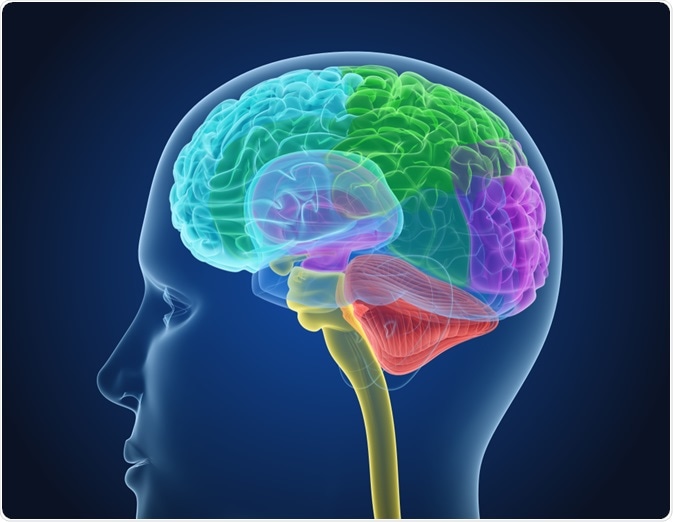Image Credit: Prostock-studio / Shutterstock.com
The Proust phenomenon
In the beginning of the well-known 1919 novel titled Swann’s Way, the author Marcel Proust describes how the flavor of a madeleine cake dipped into a cup of tea caused a vivid memory of when the author’s aunt Leonie would prepare this sweet snack in the same way on Sunday mornings of his childhood.
Since its publication, researchers have utilized this literary anecdote to describe the way in which odors can vividly trigger autobiographical experiences as a “Proust phenomenon.”
Many different psychological studies have investigated the Proust phenomenon in human subjects, which has led to a number of findings confirming that odor-cued memories trigger a much more emotional response as compared to those triggered by visual or verbal cues.
In addition to causing a more dramatic emotional response as compared to other senses, odor-cued memories have also been described in much more vivid words as compared to those recalled following auditory or verbal cues.
Interestingly, the autobiographical memories evoked by odors can also date back much farther to even the first decade of life, which is comparable to memories that are associated with verbal and visual cues that instead are often limited to the early adulthood years between the ages of 11 and 20.
As the most evolutionary ancient sense, human olfaction is extremely unique in its ability to rapidly summon emotional and extremely vivid memories that were originally formed early on in life.
Why is smell important to memory?
Although the ability to connect certain odors to old memories may not seem to be significant, the connection between environmental odors and memories is extremely important in the animal kingdom.
In fact, much of an animal’s olfactory learning will occur during their major life events and thus play a role in their ability to defend themselves against predators, acquire the appropriate sources of food and mate with other animals.
During their early postnatal period, altricial pups, for example, are solely dependent upon their mother for feeding and maternal care. During this time, these young pups will experience rapid, strong and highly relevant olfactory learning that will not only contribute to the mother-young bonding but can also affect their chemosensory individuality and the ability of these newborns to eventually recognize their future mates.
As animals continue to grow, emotional learning is crucial in their ability to survive, particularly during and after threatening situations, so that they can avoid this potential danger in the future. This type of rapid emotional learning is modeled by fear conditioning, which begins with a typically non-threatening stimulus, such as a specific noise or odor, that arises at the same time as a noxious stimulus, such as shock.
While the aforementioned stimulus would ordinarily be neutral to the animal, its association with the latter event will provide the animal with the knowledge of how to recognize this danger in the future and avoid it at all costs.
 Image Credit: Alex Mit / Shutterstock.com
Image Credit: Alex Mit / Shutterstock.com
Neuroanatomy and memory
While the Proust phenomenon may surprise some individuals, a more thorough look at the brain’s anatomy points to how smell and memory are closely linked. Olfactory sensory neurons, which are the nerve cells that are equipped with the ability to sense incoming chemical stimuli within the environment, are present within the olfactory epithelium that covers the back of the nasal cavity.
Once sensed by these neurons, odorant stimuli are transduced into electrical signals to allow for their migration to the olfactory bulb, which is the first relay of olfactory information. As compared to other mammalian sensory systems that first pass through the thalamus before reaching cortical areas, olfactory information can travel directly to the limbic system, of which includes the amygdala and the hippocampus, via the olfactory nerve without requiring any prior stop to the thalamus.
The unique direct access that olfactory information has to the amygdala helps to explain why a specific odor can immediately trigger a detailed memory and/or intense emotion. A number of both human and animal studies have determined the amygdala to play a crucial role in the processing of emotions, as lesions in the amygdala of nonhuman primates causes abnormal emotional responses to arise following exposure to biologically significant stimuli that would normally elucidate fear and/or aggression.
Additional studies have confirmed this role of the amygdala by electrically stimulating the human amygdala, which results in the production of fear or other strong emotional responses. Taken together, the rapid direct anatomical connection that exists between the olfactory bulb and the amygdala elucidate the mechanisms by which the sensing of certain smells have the ability to automatically trigger emotional odor-related memories.
References
- Mouly, A., & Sullivan, R. (2010). Memory and Plasticity in the Olfactory System: From Infancy to Adulthood. In: The Neurobiology of Olfaction. Available from: https://www.ncbi.nlm.nih.gov/books/NBK55967/.
- Aqrabawi, A.J., & Kim, J.C. (2018). Hippocampal projections to the anterior olfactory nucleus differentially convey spatiotemporal information during episodic odour memory. Nature Communications 9(2735). doi:10.1038/s41467-018-05131-6.
- What the nose knows [Online]. Available from: https://news.harvard.edu/gazette/story/2020/02/how-scent-emotion-and-memory-are-intertwined-and-exploited/.













